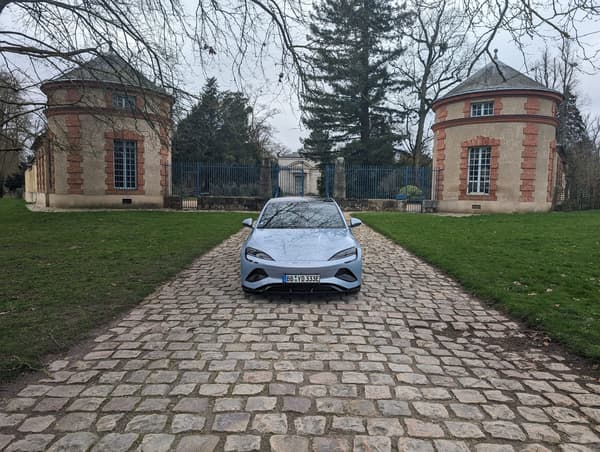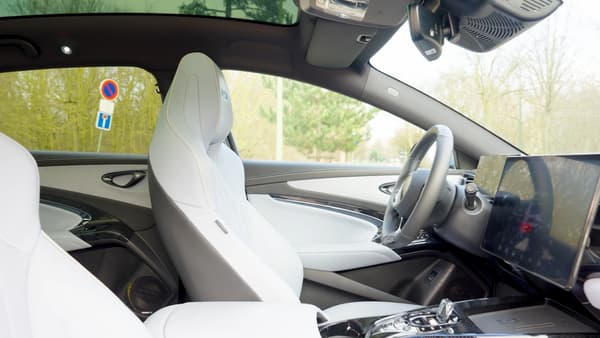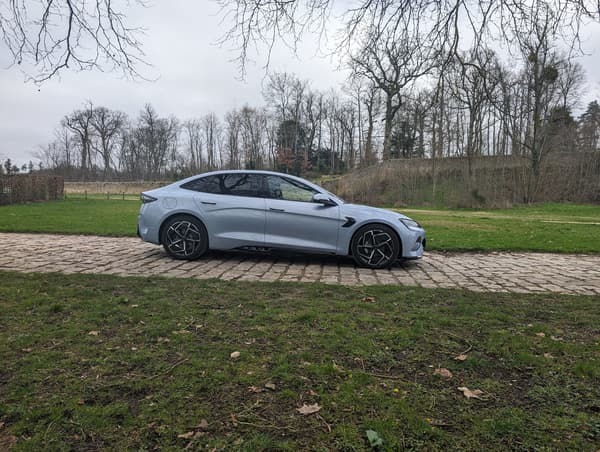It doesn’t go unnoticed. Parked on the street during our tests, the BYD Seal raises questions. “What is this brand?”, “Is it a Tesla?” Relevant question because the large 4.80 meter long sedan is a perfect rival to the Model 3, the master standard of electric sedans.

With the Seal, the Chinese manufacturer BYD shows great ambitions. The second largest electric vehicle manufacturer in the world (1.6 million electric cars sold in 2023) wants to show that it is capable of doing as well as the American, number one in the world last year with 1.8 million cars sold.
In its home market, BYD even finished in a leading position for the first time, in all engines combined, with more than 2.5 million units sold (electric cars and plug-in hybrids), ahead of Volkswagen (2.23 million ) and Toyota (1.7 million). ).
A comfortable interior
Therefore, the Seal is more at the top of the range, with a range of more than 500 WLTP kilometers and quite neat finishes.
This is what emerges in general from our test model. If the sky blue that dominates the seats or the doors does not convince us very much (but the tastes and colors do…), the interior seems luxurious and the materials, in general, careful. While boot space in the rear (400 liters) is a little less generous than in a Model 3, rear passengers have plenty of space.
Disappointing connectivity
On the front, BYD opts for a semi-pure style, with a screen behind the steering wheel and a large screen in the center of the dashboard. The latter can be adjusted horizontally or vertically, allowing you to choose the orientation that best suits the driver. However, a small disappointment: when the driver uses, for example, Android Auto, the screen returns to horizontal by default.

Another disappointment of this screen: although it is quite responsive, the application catalog is still limited. Furthermore, as in a Model 3, it is impossible to take advantage of, for example, charging stops to watch YouTube videos on the screen. Even when stopped, the videos are not available through streaming services, only through a USB stick.
We also noticed a lot of random translations: “energy feedback intensity” to adjust the level of regenerative braking, or “initialize graphics” to reset consumption data.
Average in terms of consumption
So let’s focus on driving. The Seal is pleasant, despite its 2.1 tonne weight, with little road or air noise and smooth steering. This weight, however, is felt in consumption. Thus we achieved an average of 20kWh/100, a quite acceptable average. Our consumption has been reduced to 16kWh in urban driving. This average dimension is found during reloading. In just over 40 minutes we went from 40% battery to 86% recharged battery. A less efficient score than a Model 3.

Our test version, with a single 313 horsepower rear motor, goes from 0 to 100 km/h in 5.9 seconds, a tad better than a Model 3 RWD. This is still more than enough for daily use and dynamic driving.
For more advanced features, it is advisable to turn to the Seal with all-wheel drive, with a 0 to 100 km/h time of 3.8 seconds. This figure is located in its original form under the BYD Seal logo on the rear of the vehicle.
A little more expensive than a Model 3
If the BYD Seal joins the Tesla Model 3, it is a plus. Both cars are no longer eligible as both cars are made in China. Our BYD Seal in finishes “Design” (the first level, already very well equipped) starts at 46,990 euros. They are 4,000 euros more than the Model 3 Propulsion (513 kilometers of autonomy).
The 4-wheel drive version has a starting price of 49,990 euros, or 1,000 euros less than the Model 3, a direct competitor. The latter has a range of 629 kilometers compared to the Seal’s 520 kilometers.
Source: BFM TV

